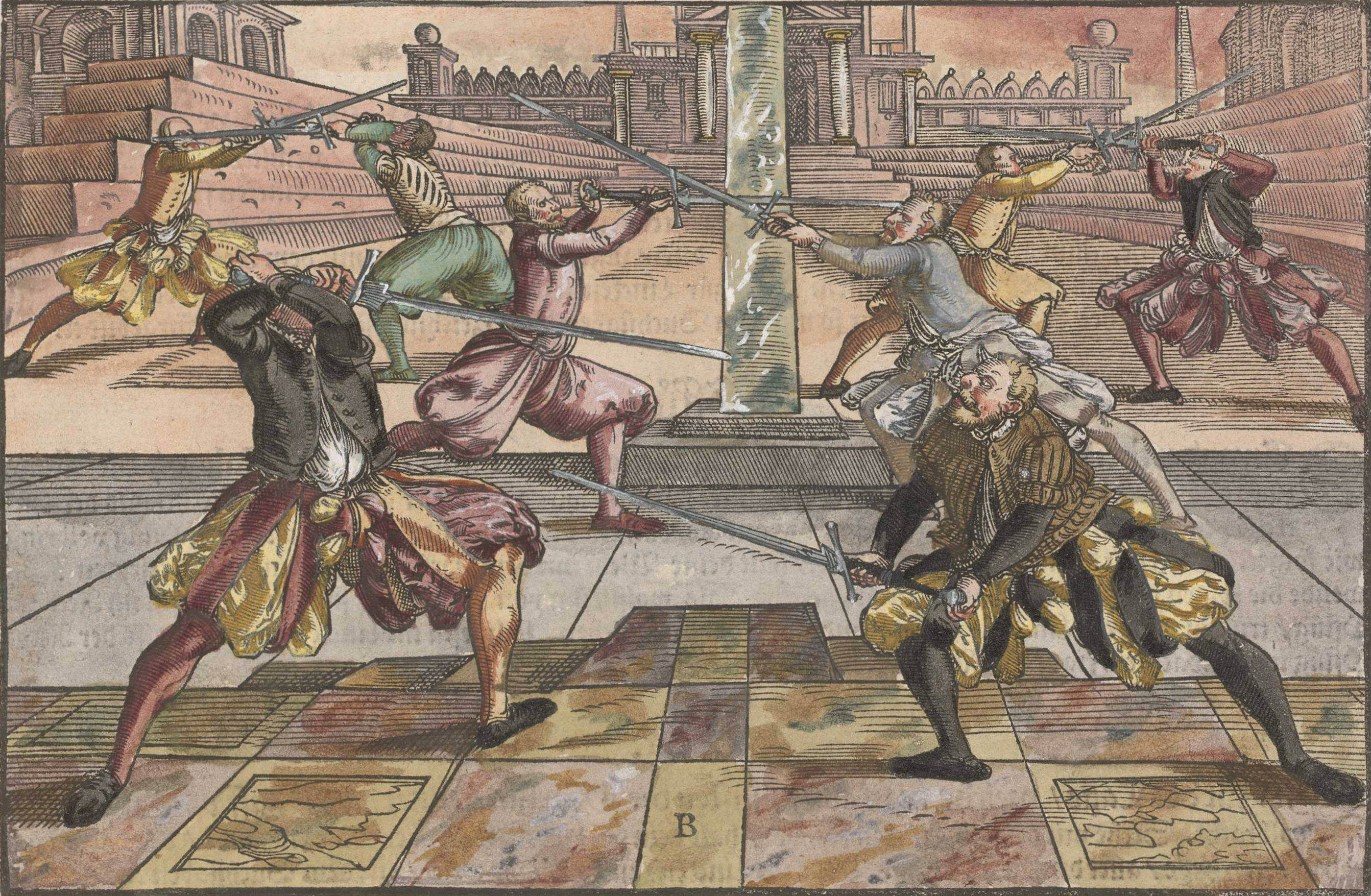The most obvious goal for someone learning to fight with swords is to get good enough to enter sword-fighting competitions and do well against other sword-fighters. And, I suppose that is my long-term plan. My medium-term plan is less ambitious, but rather specific.
I’ve come up with this intermediate goal because I know that I am not a natural martial artist. My reflexes and hand-to-eye coordination are merely average. Besides that, I am well below average in my ability to watch someone execute a move and then do “the same thing.” I’ve written about this before in my post Learning movement through words.
I hadn’t realized it in advance, but the very nature of Historical European Martial Arts makes it especially well-suited to me: Essentially every HEMA practice is based on a text—in our case Joachim Meyer’s The Art of Combat. The text provides the verbal description that I need to be able to learn a movement practice.
Still, even with the text and the instructors showing us stuff (and correcting our errors) and classmates to practice with, I’m still the guy with merely average reflexes and hand-to-eye coordination (plus a lifetime of no experience with stuff like this, because I was in my 40s before I figured out that I could learn this stuff at all, as long as I have a verbal description to work from), so my expectations for developing the skills of an excellent sword-fighter are rather low.
That would be rather discouraging, so I’ve come up with my own personal medium-term goal. I’m going to focus on executing Meyer’s system very, very well. Success for me will not depend on doing well sparring with opponents, but rather on looking like—moving like—someone who has trained with the best teachers of Meyer’s system.
Expressed in aspirational terms: A year or two from now a modern expert in Meyer longsword will look at me and think, “Wow—this guy looks like he might have trained with Meyer himself!”

Knowing my own strengths and weakness, this seems like it might be achievable, with the bonus that it will probably be much more effective at making be a better sword-fighter than if I jumped right into trying to figure out how to spar well.
I had been waiting to get the new translation of Meyer that’s coming later this month from HEMA Bookshelf, but decided to go ahead and order a copy of the existing translation. It’s what everyone in the group has been working with for several years now, so the instructors and senior students all know it. I’m sure it’ll remain a useful reference even if everyone switches to the new translation as soon as it’s available. (And I’ll get the new translation immediately myself.)
My short-term plan to support my medium-term plan will be to create my own practice sessions on the foundational stuff: stance, footwork, guards, and cuts. The classes covered stance and footwork on the first day (and then added a third stepping pattern on the second day), but hasn’t returned to those things since then. This makes sense: We’re practicing stance and stepping as we’re learning cuts and parries. But for my purposes, I think and extra 15 or 20 minutes each day specifically working on these items (which are readily amenable to solo practice) will do me a world of good. I’ll also spend a few minutes each day working on the German vocabulary, so I know the names of everything (and know what the thing is!).
One bright spot: I seem to be fit enough. The first week and a half I was just a bit worried about whether I could do a 2-hour training sessions and the recover enough to do the next one and then the one after that, but it seems that my fitness regimen of the past few years is standing me in good stead. I may not be as strong or as fast (or recover as well) as the fitter of the college-age kids, but I’m fit enough to see a practice session through to the end.